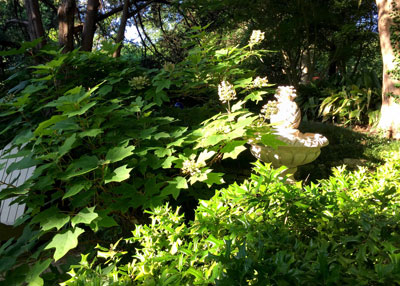Gardening This Weekend: June 9, 2016
Before we get into this week’s timely tasks, we need to address the aftermath of last week’s onslaught of rain that hit much of our state.
I have perhaps 20 Oakleaf hydrangeas scattered through our rural woodlands in the DFW area. Over the 30 years that I’ve grown them, I’ve observed that they always wilt when sunlight hits them, even though their soil may be continuously moist. Their leaves are so large that they just can’t pull the water through the roots, into the stems and out to the leaves quickly enough.

Tomatoes are the very same way. If they are exposed to several days of cool, wet weather, when the sun once again hits their leaves at full strength, they’re going to wilt during the day.
Our natural reaction will always be to water a wilted plant, but in situations like this, it’s critical that you check the soil first. If the plant is wilted, and if the soil is still wet, don’t apply any more water. Odds are that the plant will perk back up as soon as the sun goes down. Within a few days it will be back to normal.
Some plants in areas where soils were waterlogged for many days may end up being lost – they just don’t bounce back once conditions go back to normal. In their cases, you can only remove them and move on.
Now to this weekend’s prime tasks.

• Crape myrtles while in full bloom to ensure you get the colors you want. Check each variety’s mature size so you won’t have to top them to keep them bounds. (Topping is never acceptable.)
• Turfgrass from sod, seed, plugs or by hydromulching. Water lightly once or twice daily for the first week to get roots established.
• Tropical color plants for brightest summer color. Let your nurseryman show you the many options.

• Pinch growing tips out of Mexican bush salvia, coleus, copper plants, fall asters and mums to force them to produce side shoots. That will keep the plants much more compact.
• Remove blackberry canes that just bore fruit. Cut completely to ground. They will never bear fruit again.
• Branches that are blocking sun from reaching turfgrass below. Don’t destroy the natural forms of the trees in the process, however.

• Turfgrass with high-nitrogen or all-nitrogen fertilizer with half or more of the nitrogen in encapsulated or coated, slow-release form.
• New lawns with same type of lawn food, but at half the recommended rate. Wait one month and fertilize again at the recommended rate.
• Container plants with high-nitrogen, water-soluble plant food each time that you water. Results will be rapid and very noticeable.

• Second application of Team, Dimension or Halts pre-emergent weedkiller to prevent germination of grassbur and crabgrass seeds for remainder of season. If you did not make first application in March, this one will be of no value.
• Fleas are rampant. This information from Texas A&M Extension entomologist Dr. Mike Merchant is extremely thorough. Home remedies do not work! http://citybugs.tamu.edu/factsh…/biting-stinging/…/ent-3001/
• Spider mites attacking marigolds, tomatoes and many other plants. Look for tan mottling. Thump a suspect leaf over white paper. If you see nearly microscopic specks starting to move around freely, those are the mites. Look for an insecticide that also lists mite control on its label.
